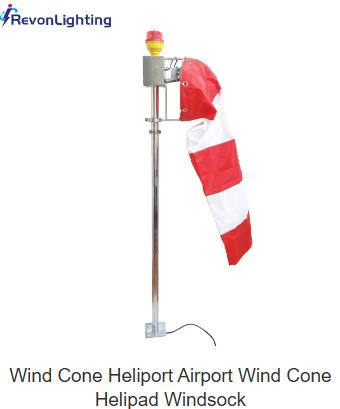Airfield windsock and lighted windsock are indispensable tools in the aviation industry, providing crucial information about wind conditions. These devices help ensure the safety of aircraft operations, particularly during takeoff and landing. This article explores the significance, design, and benefits of airfield windsock and lighted windsock.
Importance of Airfield Windsock
An airfield windsock is a fundamental component of any airfield, offering immediate visual cues about wind direction and speed. Pilots rely on this information to make informed decisions, especially during critical phases of flight like landing and takeoff. The windsock’s orientation indicates wind direction, while its level of inflation shows wind speed.
Design and Functionality
Airfield windsocks are typically constructed from durable, weather-resistant materials such as polyester or nylon. They are conically shaped, allowing them to catch the wind easily. Bright colors like orange or red are commonly used to ensure high visibility from a distance. Some windsocks feature stripes or markings to provide more detailed information about wind speed.
Role of Lighted Windsock
A lighted windsock is an enhanced version of the standard windsock, designed to be visible during low-light conditions or nighttime. Equipped with internal or external lighting, these windsocks remain clearly visible regardless of the time of day or weather conditions. Lighted windsocks are crucial for airports with 24-hour operations or those located in areas prone to fog, rain, or other adverse weather conditions.
Benefits of Lighted Windsock
The primary advantage of a lighted windsock is its ability to provide continuous wind information in all lighting conditions. This is essential for maintaining safety during nighttime operations or in poor weather. The illumination ensures that both pilots and ground crew can always see the windsock, reducing the risk of accidents caused by uncertain wind conditions.
| lighted windsock | 60CM |
| 120CM | 150CM |
Installation and Maintenance
Installing airfield windsocks and lighted windsocks requires careful consideration of their placement to maximize visibility and effectiveness. They are usually mounted on poles with swivel mechanisms that allow them to rotate freely with the wind. Regular maintenance is necessary to ensure they remain functional. This includes inspecting the fabric for wear and tear, ensuring the swivel mechanism operates smoothly, and replacing any lighting elements in lighted windsocks.

Technological Advancements
Recent technological advancements have led to the development of more sophisticated airfield windsocks and lighted windsocks. Some modern windsocks are equipped with sensors that transmit real-time wind data to airport control systems. This integration of traditional windsocks with digital technology enhances overall safety and efficiency.
Airfield windsock and lighted windsock are vital for aviation safety, providing real-time information about wind conditions. Their straightforward yet effective design ensures reliability in both daytime and nighttime conditions. As technology continues to evolve, these essential tools will remain integral to safe and efficient airfield operations.